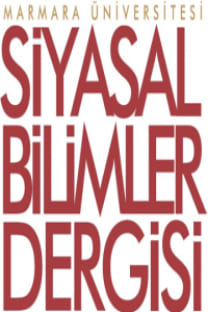Filistin Sinemasında "Sumud" Temasının Ortadoğu'nun Gelecek İnşaasında Yeri ve Önemi
Sumud terimi Filistin halkı arasında ortaya çıkan, ideolojik bir karşı duruş olan intifada hareketinin pasif direniş durumudur, fakat bu terim Arap milliyetçiliği anlamına gelmemektedir. Sumud terimi, Filistinliler için pasifizm ve şiddetin arasında yer almaya çalışmakta, sebat ve kararlılıkla toprağına bağlılık ve sürgünü kabul etmeme, vatandan vazgeçmeme anlamında kullanılmaktadır. Kimlik ve geçmiş söz konusu olduğunda; Filistin halk kültürünün basın, şiir, roman, müzik ve kamusal olaylara dair özellikleri de Sumud hareketinin yörüngeleri haline gelmekte ve anlamsal boyutlarıyla bu hareketi biçimlemektedir. Filistin kültürünün bir parçası olan Filistin sinemasının birçok örneği aynı zamanda bir diaspora-sürgün sineması olarak kabul edilebilir. Bunun gerekçesi ise, çoğu filmin Arapça dışında İngilizce ve Fransızca çekilmiş olması, sürgünde bulunan Filistinlilerin filmlerin üretim, dağıtım ve gösterim aşamalarında katkılarının olması, sınır ötesinden bir anlatımın esas alınması, politik gündeme sahip anlatıların mizansenin önünde olmasıdır. Diaspora ve sürgün çerçevesinden Filistin sineması, stilistik bir durumu değil, üretim koşullarını temsil etmektedir. Bu sürgün modeli sinema ulus aşırıdır. Ortadoğu’nun çok kültürlü altyapısı gerçeğinden hareketle Filistin sineması kültürlerarası bir sinemadır ve ideolojik söylemi, güçlü bir hafızadan ve travmalardan oluşmuştur. Bu çalışma, zengin ve köklü Ortadoğu kültürüyle beslenen Ortadoğu sinemasının bir örneği olan Filistin sinemasının karakteristik niteliğini, Sumud hareketinin prensipleri altında irdeleyerek, gelecekte Ortadoğu barışına pozitif söylemin aktarımına sanatsal çerçeveden bakmaya çalışacaktır.
Anahtar Kelimeler:
Ortadoğu sineması, yabancılaşma, sürgün sineması, kimlik, milliyetçilik
-
Came up among the Palestinian people, the term Sumud signifies a passive resistance of ideological uprising, the Intifada movement, but it doesn’t mean Arab nationalism. For Palestinians the term Sumud means a stand in between pacifism and violence, rejection of exile with perseverance and stability and standing firm for the homeland. When it comes to identity and past; attributes of Palestine folk culture like press, poem, novel, music and their particularities in terms of public events are trajectories of Sumud movement and they formalize this concept through their narrative dimensions. Many examples of the Palestine cinema, which is a part of Palestine culture, can be seen as a diaspora-exile cinema as well. The reason for this is that, other then in Arabic, most of the films are produced in English and French, productions of Palestinians in exile, their contribution in distribution and screening phases, cross-border narrations and the priority of political agenda of the country over the scene. From the perspectives of the diaspora and the exile, Palestine cinema does not represents stylistic features but the conditions of productions. This model of exile cinema is cross-border2… Taking into acount the fact multicultural base of the Middle East, the Palestine cinema is an intercultural cinema and its ideological discourse is consisted by a very strong memory and traumas. Under the principles of Sumud movement, this study will examine the characteristic features of the Palestine cinema as an example of the Middle Eastern cinema, which is nourished by rich and long rooted Middle East culture, and will try to look the transmission of the positive discourse for the peace through the artistic framework.
Keywords:
Middle East cinema, alienation, exile cinema, identity, nationalism,
___
- Abed G.T. (1998) The Palestinian Economy: Studies in Development Under Prolonged Occupation, New York: Routledge.
- Betz M. (2009) Beyond The Subtitle: Remapping European Art Cinema, USA: University of Minnesota Press.
- Cohen C.,Varea R.G.,Walker P.O. (2011) Acting Together, Performance and the Creative Transformation of Conflict. USA: New Village Press.
- Gertz N.,Khleifi G. (2008) Palestinian Cinema: Landscape, Trauma and Memory, Edinburgh: Edinburgh University Press.
- Ginsberg T.,Lippard C. (2010) Historical Dictionary of Middle Eastern Cinema, United Kingdom: Scarecrow Press.
- Guidry J., Kennedy M.D., Zald M.N. (2000) Globalizations and Social Movements: Culture, Power, and The Transnational Public Sphere, USA: University of Michigan.
- Hayward S. (2006) Cinema Studies: The Key Concepts, New York: Routledge.
- Iordanova D.,Jones D.M, Vidal B. (2010) Cinema at the Periphery, Michigan: Wayne State University.
- Jetter A.,Orleck, A., Taylor D. (1997) The Politics of Motherhood: Activist Voices From Left To Right, Hanover: University Press of New England.
- Mazierska E.,Rascaroli L. (2004) The Cinema of Nanni Moretti: Dreams and Diaries, London: Wallflower Press.
- Nassar J.R. Heacock R. (1990) Intifada: Palestine at the Crossroads, New York: Greenwood Publishing.
- Néfissa S.B.,Milani C., Hanafi S., Abd al-Fattah N. (2005) NGOs and Governance in theArab World, Cairo: The American University In Cairo Press.
- Neslen A. (2011) In Your Eyes a Sandstorm: Ways of Being Palestinian, London, University of California Press.
- Shami I. (2005) Pardes, Tel Aviv: BookSurge.
- Stein R.L, Swedenburg T. (2005) Palestine, Israel, and the Politics of Popular Culture, USA, Duke University Press.
- Şevki A. (2009) Edebiyat ve Yorum, Almanya: Havuz Yayınları.
- Tessler, M.A. (1994) A History of the Israeli-Palestinian Conflict, USA: Indiana University Press.
- Tolan S. (2008) Limon Ağacı, İstanbul: Pegasus Yayınları.
- Ungar M. (2005) Handbook for Working with Children and Youth: Pathways to Resilience Across Cultures and Contexts, USA: Sage Publication.
- Yiftachel O. (2006) Ethnocracy: Land and Identity Politics in Israel/Palestine, USA: University of Pennsylvania Press.
- Yayın Aralığı: Yılda 2 Sayı
- Başlangıç: 2013
- Yayıncı: Marmara Üniversitesi
Sayıdaki Diğer Makaleler
Büyükşehir Belediye Meclislerindeki Temsil Adaletsizliğinin Coğrafi ve Siyasi Görünümleri
Göçmen Karşıtlığından İslamofobiye Avrupa Aşırı Sağı
Yazım Kuralları ve 4. Sayı Makale Çağrısı
Siyasal Bilimler Dergisi YAYIN KURULU
Kamu Yönetiminde Geleceğin İnşasında Stratejik Bakış
Filistin Sinemasında "Sumud" Temasının Ortadoğu'nun Gelecek İnşaasında Yeri ve Önemi
Aktörün Yönetişim İlkelerine Yönelik Tavırları: Türkiye’de Deniz Ticareti Sektörü Örnek Olayı
Giriş-Takdim-Teşekkür-İçindekiler
Siyasal Bilimler Dergisi YAYIN KURULU
